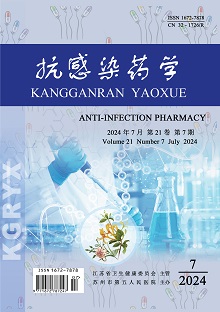LI Wei-wei, HU Han-shuai
Objective: To analyze the clinical characteristics of elderly patients who received anti-infective pharmaceutical consultation in the hospital and provide a reference for the continuous improvement of pharmaceutical services for elderly patients in the clinical practice. Methods: A total of 3 328 patients who received anti-infective pharmaceutical consultation in the Second Affiliated Hospital of Guizhou Medical University from December 2021 to December 2023 were selected as the research objects through the hospital's information system. The information such as patients' age, underlying diseases, liver and kidney functions, infection sites, department distribution, reasons for consultation, consultation opinions of clinical pharmacists and their adoption, disease outcome, patient satisfaction was collected, and the relevant clinical characteristics of the elderly patients were analyzed. Results: Among the 3 328 patients who received anti-infective pharmaceutical consultation, 1 433 cases were elderly patients (43.06%). Among the 1 433 elderly patients, their ages were mainly in the range of 60 to 80 years old (1 217 cases, 84.93%); the vast majority of patients (1 350 cases, 94.21%) had more than three underlying diseases, and most patients (1 008 cases, 70.34%) had infections in multiple sites. In addition, most patients (964 cases, 67.27%) underwent microbiological examinations before pharmaceutical consultation. The 1 433 elderly patients were distributed in 28 clinical departments, among which the top five were critical care medicine (434 cases, 30.29%), oncology (155 cases, 10.82%), nephrology and rheumatology (100 cases, 6.98%), orthopedics (76 cases, 5.30%) and hematology (72 cases, 5.02%). The main reason for consultation for elderly patients was "poor effect of anti-infection regimen" (1 123 cases, 78.37%); after the consultation, the vast majority of patients fully followed the consultation opinions (1 405 cases, 98.05%), and the conditions of most patients improved (1 210 cases, 86.12%). The sampling survey showed that the doctors' overall satisfaction with clinical pharmacists' pharmaceutical consultation was as high as 99.33%. Conclusion: Clinical pharmacists conduct anti-infective pharmaceutical consultation for elderly patients, which not only effectively helps patients to achieve good therapeutic effect, but also gains the recognition and affirmation from clinicians and demonstrates the professional ability and value of clinical pharmacists.
